
You Look Like a Tall Glass of Waterthrush

By Blake Goll


Children, teens and adults of all ages are invited to join us this Sunday February 16 at the Willistown Conservation Trust from 9-11am for our annual Great Backyard Bird Count (GBBC)! Contact Blake Goll (bhg@wctrust.org) if you’re interested in participating.
The Cornell Lab of Ornithology’s GBBC is a global, 4-day citizen science event during which people from all walks of life tally birds in order to help scientists discover important population patterns about birds. Last year, GBBC participants in 111 countries counted over 33 million birds on close to 138,000 checklists, documenting some 4,200 species, which is more than one-third of the world’s species!!

This participation represents an incredible effort that helps answer questions like: Where are the birds now? How is climate change affecting populations? What are the patterns of irruptive bird species (those like winter finches that flood south in some years but not others based on food availability)? How is migration timing different from year to year? How are diseases like House Finch Eye Disease or West Nile Virus affecting populations?

For example, one sad pattern scientists have discovered through GBBC data is that Carolina Wrens seem to disappear from northern checklists in cold winters like the one we are having now. These adorable little mouse-like birds are actually a more southern species whose range has expanded northward in the past decades because of our mild winters. However, they do not migrate and so often perish during harsh winters; it can take up to 10 years for the population to return to the north after such cold-weather die-offs. Keep those feeders filled if you notice one of these charming brown “butterballs” in your yard, for they may not be as hardy as they look.

GBBC participants enter their checklists online at gbbc.birdcount.org, which is a fantastic resource for learning more about the GBBC and birds in general. Here you can watch a real-time map during the count (February 14-17) of checklists as they are submitted along with excellent photos of birds. There’s a great interactive section where you can actually explore data compiled from past GBBCs, including year-to-year comparisons of ranges both within and between species. It’s fun to play around with!
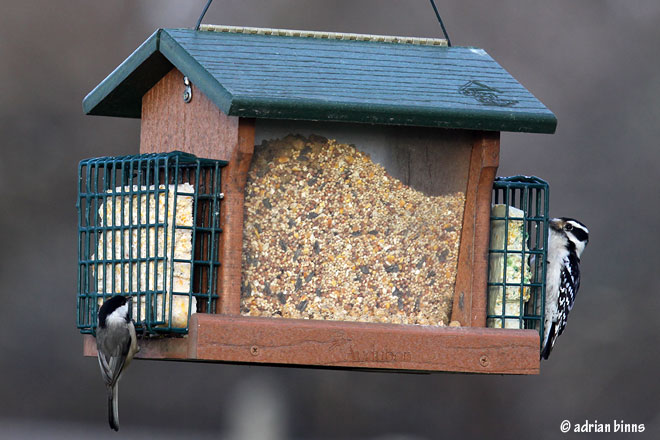
This is an especially exciting GBBC with the crazy weather we’ve been having and the historic avian events such as the Snowy Owl irruption or “Snow Storm” as it’s now affectionately called. Because of milder arctic weathers, the tundra rodent population boomed this past summer, creating a bumper crop of Snowies that have flooded south for overwintering territories. Check out my recent blog post to learn more, or visit Project Snowstorm to learn about the incredible research underway to track these Snowy Owls with solar powered transmitters.
Besides a Snowy Owl, you also might be able to add a seldom-seen grebe to your GBBC checklist this year! Grebes are handsome little loon-like birds that are highly specialized for diving; with their stubby legs set so far back on their bodies, they need large bodies of water to takeoff and are pretty much immobile on land. Red-necked and Horned Grebes normally call the Great Lakes their winter home, but the icy polar vortexes that have been lurking in the Northeast this winter have caused massive freezing of the lakes, more than we’ve seen in decades.
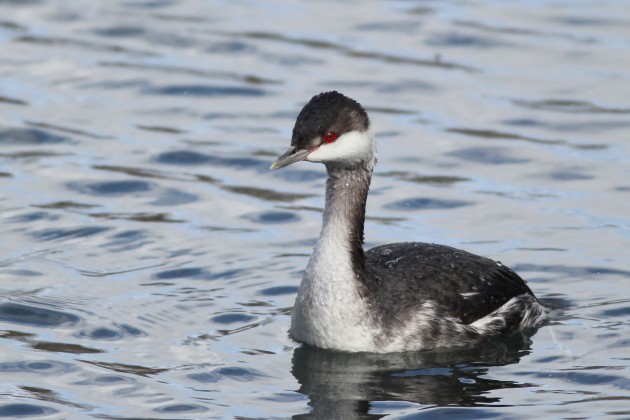
The displaced Grebes are forced to move south toward the coast, hoping for large bodies of water along the way. This is a dangerous journey with the frequent snow and ice storms that have been berating our region. Many of these poor night travelers actually get iced over as they are flying and crash to the ground in sometimes fatal “wrecks”. The lucky ones land in a soft pile of snow or in a body of water, so birders should be on the lookout for these birds! If you see one, report it to eBird so that scientists can track this movement. And if the bird needs help (like if it’s stranded in a parking lot or field) gently pick it up in a blanket, place it in a box and call Tri State Bird Research and Rescue!
Hope to see you this weekend!
There’s a lot going on in the woods,
Blake

Ever since we heard a Kentucky Warbler singing in the woods, we were hoping that one would fly into the net. Its song was taunting us, and we could often be caught coaxing it to fly our direction. Finally, on the last net run of the day, a Kentucky Warbler thrilled us with his arrival. It’s a historic moment for Rushton because this is the first time we have banded a Kentucky Warbler! One of the most striking features of the Kentucky Warbler is its face mask, a black and olive green color. The olive green color and the bright yellow of his belly were simply gorgeous to see up close. His exotic colors and the rarity of event of seeing a Kentucky Warbler rather than just hearing his song made his visit truly remarkable. This one knows how to pose for the camera!

Part of the reason why his appearance is so notable and exciting is because the Kentucky Warbler’s presence in the Rushton woods, along with other threatened species such as the Scarlet Tanager and the Wood Thrush, is part of what makes it an IBA (Important Bird Area). The Kentucky Warbler relies upon bottomland hardwood forest for nesting. This specific nesting requirement makes the Kentucky Warbler an important reason to conserve these habitats in Pennsylvania. Kentucky Warblers winter in the southern part of the United States and outside the United States. You can see where they have been sighted on this map.
Why is it called the Kentucky Warbler? The Kentucky Warbler is named for the state where it was first sited in 1811! Another interesting fact about the Kentucky Warbler that the Cornell Lab of Ornithology shares is that the male will sing the same song type and only change pitch to match a competitor, while other song birds will change their song type.

The Kentucky Warbler certainly stole the show, but we also had some other species return to us this week, along with some new captures for this season.


The Carolina Wren is quite romantic, as it mates for life! It was on this bird that we noticed the Uropygial Gland, a gland that birds use for preening. They will rub their beaks against the gland and spread the oil over their feathers!

~ Guest Blogger, Natalie Staples
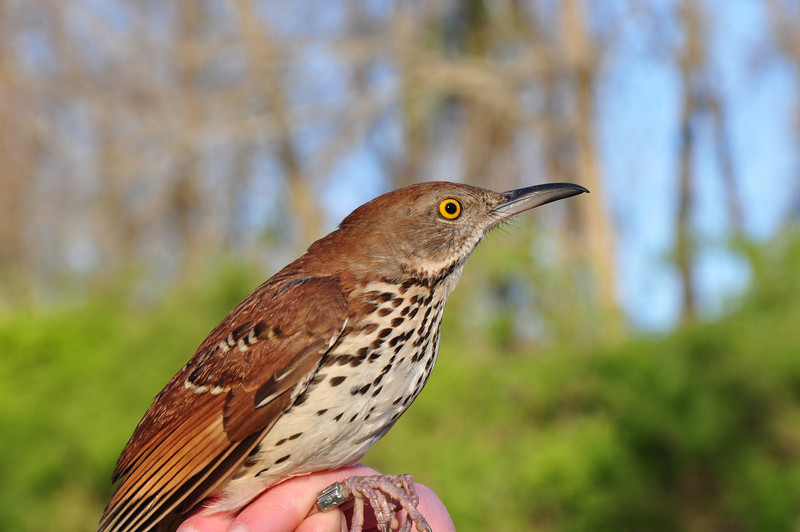
The vernal clock is ticking, the fervent winds from the South are rising, and I can almost hear the steady beating of the wings as the migrant wave swells steadily northward. The birds that have already arrived or passed through seem to be twittering, “The tide is coming, the tide is coming!”, as they hurriedly move on or get right down to reserving the best territories before the crowd comes.
The crowd is indeed coming! Birders have been reporting that migration is “raging” in the south, and birds in the east that have been bottled up by the recent storms just moved north in massive numbers in the last couple of nights. Although it is still a bit early for neo-tropical migrants here, we can expect to see increasing numbers of warblers, vireos, tanagers, orioles and grosbeaks.

Check out this radar image of migration movement south of us last night. The circles of blue indicate migrating birds, while the irregular patterns are storms. Pretty cool, huh? Radar images are being used more regularly in ornithology and birding to help predict bird migration and link bird movements to weather patterns.

We are expecting the banding station to start getting very busy! We have been open for “birdness” (as Lisa Kiziuk, Director of the WCT Bird Conservation Program, puts it) for the past three weeks, and things have been pretty quiet with only half a dozen birds on some days. However, we have had good quality to make up for the lack of quantity: a migrant flock of American Robins, several Brown Thrashers, nice little flocks of White-throated Sparrows, a couple Winter Wrens, Hermit Thrush, a White-eyed Vireo, and a red phase Eastern Screech Owl! A pair of Brown Thrashers are nesting at Rushton Woods Preserve, so we get to listen to the male’s lovely song every morning.

Last week, we captured a recap Common Yellowthroat ; we had banded him in a previous year, so he has returned safely to his summer home! This week, Gray Catbirds arrived, including one of ours that we banded at Rushton last year. Welcome home! I’m never more excited to see a catbird than I am for the first catbird of the year. They become so common so fast, our “bread and butter bird”, but for now the Catbird elicits smiles from ear to ear as if he were a good friend of ours that had been out of touch for years. His beautiful song now fills the woods and our yards with tropical euphony.

Those tiny denizens of the leaves, the wood warblers, should be arriving now that their tree havens have sprung to life. I can’t wait!

Don’t forget about our Warbler Walk at Kirkwood Preserve next Sunday May 6 from 7:30am -10am, led by our federally licensed bird bander and master birder, Doris McGovern! We will meet in the Kirkwood parking lot on Grubbs Mill Road. Please RSVP to me, Blake Goll (bhg@wctrust.org), by May 3.
Also be sure to visit the banding station at Rushton Woods Preserve and Farm as migration picks up. We are open to the public Tuesday and Thursday mornings from sunrise (5:30am) until about 11am (unless it rains). No need to RSVP unless you plan to bring a large group. We band to contribute to global bird conservation efforts, to document the bird populations and species diversity using the preserve, and to connect people to nature through intimate experiences with birds.

The PA Young Birders had a blast birding and “migrating” this past Saturday at Rushton. The children had a chance to hold the newly hatched and very naked Carolina Wren nestlings, which we borrowed from the funky weed wacker nest. What was Mama Wren thinking? Needless to say, our farm staff will be short one weed wacker this season! What a perfect picture of farm and nature existing in harmony.


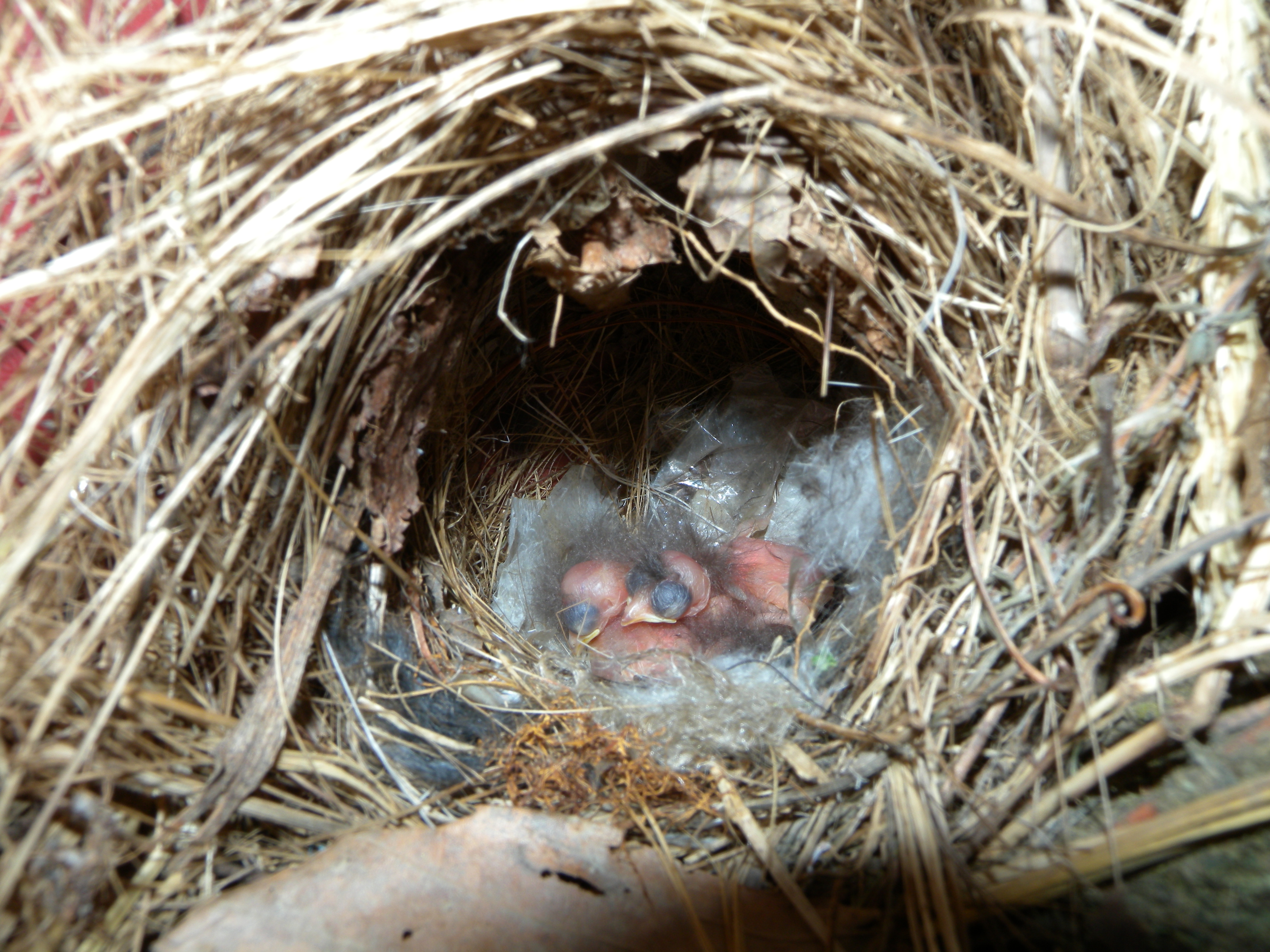

The Young Birders also got their exercise racing against each other in an obstacle course that simulated bird migration and the many (often human imposed) hazards birds must face. These hazards included having to find food and water while avoiding being eaten by cats and other predators, weaving in and out of buildings in a city, avoiding glass windows, flying over habitat destruction and around windmills, and dodging cars! (No children were injured in this simulation).

The next PAYB meeting, “Spring Migration Morning at the Rushton Woods Preserve Banding Station” will be held Saturday May 19, 9am-11am. The children will experience songbirds in the hand and science in the field during the peak of spring migration at Rushton. We offer this unforgettable memory to children for free, but a donation of $5 per child is suggested to help us maintain our special outdoor classroom and quality educational programs. Please RSVP to me, Blake Goll (bhg@wctrust.org).

Also coming up is the Pretty Big Bird Day , May 12 from as early as you wish until 6pm. Click here for more information about the event. This event is a friendly competition between teams to see who can spot the most species in the Willistown area. Families and birders of all ages are welcome! Form your own team or join an existing one by contacting Dick Eales at REales@gmail.com. Any interested PA Young Birders should contact me, Blake Goll (bhg@wctrust.org), by May 8th to join my team for a couple hours of the competition!
Here is a picture of the happy bluebird babies in my own backyard. They all hatched successfully before the egg- pecking House Wren returned, and they are just 4 or 5 days from fledging! Unfortunately, the bluebird family at Rushton was not so lucky. They nested much later than mine, and their eggs were pecked this week by the aggressive House Wren. Hopefully, once the wren gets busy with his own nest, the bluebirds will have a chance. We also plan to place three more bluebird boxes at Rushton in a more open area of the fields, far away from the hedgerow. Bluebird boxes that are too close to hedges or the edge of woods are at high risk for wren predation.
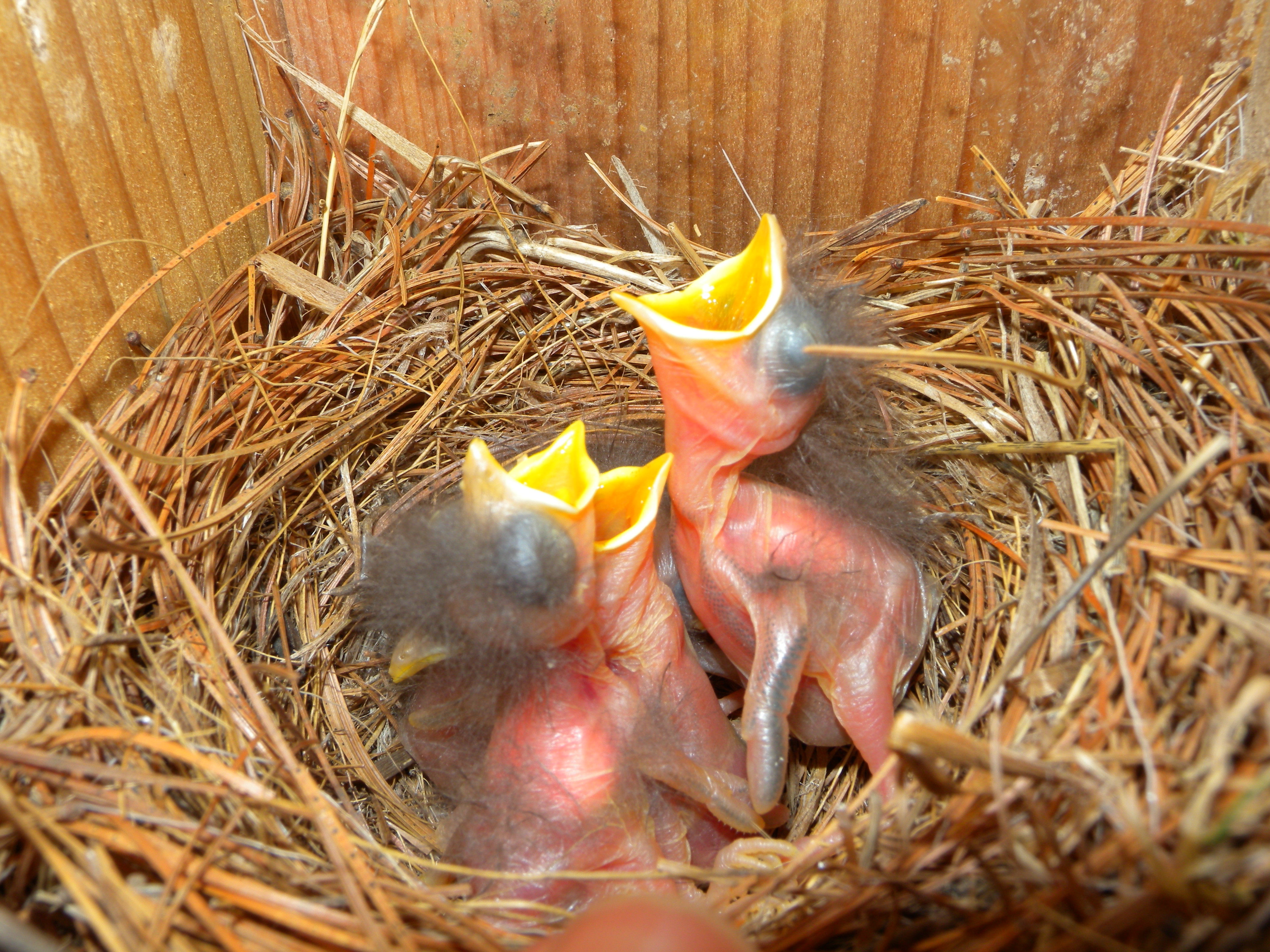
The skies are alive at Rushton with the theatrical dynamics of the Tree Swallows, which are starting their nests. Fred De Long, Director of the Farm, remembers when there was only one lone pair of swallows 3 years ago when the farm was just starting out. This year, there are several pairs; like the orioles, the swallows seem to be flourishing with the maturation of the sustainable farm nestled in the nature preserve.

Lisa Kiziuk has a family of House Finches that nested in her wreath at her home. The babies have already fledged and the TAP students ( The Achievement Project of Chester), who have been learning about the farm and birds, were thrilled to have a chance to cradle the charming nestlings in their hands last week. House finches were once sold as pets and called Hollywood Finches; their sweet and amusing dispositions coupled with their beautiful song make it easy to see why they were desirable pets!


Born on April 26, 1785, he is one of the most celebrated French-American ornithologists, naturalists, and painters. His seminal work, “The Birds of North America,” is considered the finest ornithological work ever completed and can be viewed online here. This online version is definitely not as fabulous as the real thing (which is a wonderful coffee table book!), but fun to browse nonetheless.

Excuse me, but I must go plant a tree for the birds…
Happy Arbor Day!
~Blake

925 Providence Road
Newtown Square, PA 19073
(610) 353-2562
land@wctrust.org
